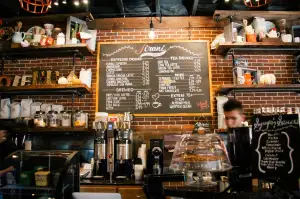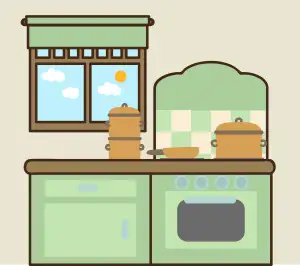Master the Art of Cooking with a Convection Oven: A Step-by-Step Guide for Home Cooks

Convection ovens have become increasingly popular in modern kitchens, revolutionizing the way we cook. Unlike conventional ovens that rely on radiant heat, convection ovens use a fan to circulate hot air evenly throughout the cooking chamber. This results in faster and more even cooking, making it a favorite among home chefs.
The circulating air in a convection oven helps to eliminate hot spots and ensures that food is cooked thoroughly and evenly. It also allows for better browning and crisping of foods, giving them a delicious golden exterior while keeping the inside moist and tender.
Whether you are a seasoned chef or just starting out in the kitchen, mastering the art of cooking with a convection oven can take your culinary skills to new heights. In this comprehensive guide, we will explore everything you need to know about using a convection oven, from understanding its basic functions to troubleshooting common issues. So let's dive in and unlock the full potential of your convection oven!
Understanding the Basics of Convection Cooking
Convection cooking is a method that uses a fan to circulate hot air around the food, resulting in faster and more even cooking. Unlike traditional ovens, which rely on radiant heat, convection ovens distribute heat evenly throughout the cooking chamber.
The circulating hot air helps to cook food more quickly, which can be beneficial when you're short on time. Additionally, because the heat is distributed evenly, you can expect consistent results with every dish.
One key benefit of convection cooking is its ability to brown and crisp foods. The circulating hot air helps to create a golden crust on baked goods and gives meats a deliciously crispy exterior.
It's important to note that convection cooking may require some adjustments to your recipes. Because the hot air cooks food faster, you'll need to reduce both the temperature and cooking time specified in traditional recipes. As a general rule of thumb, decrease the temperature by 25 degrees Fahrenheit and reduce the cooking time by about 25%.
By understanding these basics of convection cooking, you'll be able to make the most out of your convection oven and achieve delicious results every time you cook.
Preparing Your Convection Oven for Use
Preparing your convection oven for use is an important step to ensure optimal cooking results. Start by removing any packaging materials and accessories from the oven. Next, wipe down the interior and racks with a damp cloth to remove any dust or debris. Preheat the oven to a high temperature for about 15 minutes to burn off any residual odors or chemicals from the manufacturing process. Once preheated, open the oven door and allow it to cool completely before placing any food inside. This will help prevent any potential heat damage to your dishes.
Adjusting Cooking Times and Temperatures
Adjusting cooking times and temperatures is a key aspect of mastering the art of cooking with a convection oven. Unlike traditional ovens, convection ovens use a fan to circulate hot air, resulting in faster and more even cooking. To achieve optimal results, it's important to understand how to adjust your cooking times and temperatures. Start by reducing the temperature recommended in your recipe by about 25 degrees Fahrenheit. Then, keep an eye on your food as it cooks and check for doneness earlier than the original recipe suggests. This is because convection ovens cook food faster than traditional ovens. By making these adjustments, you'll ensure that your dishes come out perfectly cooked every time.
Using the Convection Setting for Baking
One of the great advantages of a convection oven is its ability to bake foods evenly and quickly. When using the convection setting for baking, there are a few key points to keep in mind.
First, always preheat your oven before placing your baked goods inside. This ensures that the oven reaches the desired temperature and helps with even cooking.
Next, be sure to use shallow pans or baking sheets with low sides. This allows for better air circulation and promotes even browning.
When it comes to adjusting cooking times, you may need to reduce the recommended baking time by about 25%. The hot circulating air in a convection oven speeds up the cooking process, so keep an eye on your baked goods to prevent overcooking.
It's also important to rotate your pans halfway through the baking time. This helps ensure that all sides of your baked goods receive equal heat distribution.
Lastly, avoid overcrowding the oven. Leave enough space between pans for proper air circulation. If necessary, bake in batches rather than trying to fit everything at once.
By following these tips and experimenting with different recipes, you'll soon become a master at using the convection setting for baking in your home kitchen.
Roasting and Broiling with a Convection Oven
Roasting and broiling are two popular cooking methods that can be easily done with a convection oven. When roasting, the hot air circulation in the oven ensures that your meat or vegetables cook evenly and develop a delicious, crispy exterior. To achieve the best results, use a roasting rack or elevated pan to allow the air to circulate around the food.
When broiling, the convection setting helps to evenly distribute heat from the top element, resulting in perfectly browned and caramelized surfaces. Remember to adjust the cooking time as convection cooking is generally faster than traditional methods.
To roast or broil with your convection oven, preheat it to the desired temperature and place your food on a baking sheet or directly on a rack. Keep an eye on your dish as it cooks since convection ovens tend to cook faster than conventional ones. Use a meat thermometer to ensure that your meat is cooked to the desired doneness.
For roasting vegetables, toss them with oil and seasonings before spreading them out on a baking sheet. The hot air circulation will help them become tender and develop a nice roasted flavor.
When broiling, make sure to position your food close enough to the top heating element for it to brown nicely without burning. Keep the oven door slightly ajar during broiling for better control of browning.
By utilizing the roasting and broiling functions of your convection oven, you can achieve restaurant-quality results right in your own kitchen. Experiment with different recipes and techniques to discover new flavors and textures that will impress your family and friends.
Tips for Successful Convection Cooking
1. Use the right cookware: Opt for shallow, metal pans that allow hot air to circulate evenly. Avoid using glass or ceramic dishes as they can hinder airflow.
2. Preheat your oven: Convection ovens work best when preheated. Allow it to reach the desired temperature before placing your food inside.
3. Adjust cooking times and temperatures: Convection cooking is faster than traditional methods. Reduce the recommended cooking time by 25% and lower the temperature by about 25 degrees Fahrenheit.
4. Keep an eye on your food: Because convection ovens cook faster, it's important to monitor your food closely to avoid overcooking or burning.
5. Rotate and rearrange: To ensure even cooking, rotate and rearrange your dishes halfway through the cooking process.
6. Don't overcrowd the oven: Leave enough space between dishes for proper air circulation. Overcrowding can lead to uneven cooking.
7. Use a meat thermometer: To ensure meats are cooked to perfection, use a meat thermometer to check for doneness rather than relying solely on cooking times.
8. Experiment and adjust recipes: Convection ovens may require some trial and error with recipes originally designed for conventional ovens. Make adjustments as needed based on your oven's performance.
By following these tips, you'll be well on your way to mastering the art of convection cooking and enjoying delicious meals with perfectly cooked results every time!
Cleaning and Maintenance of Your Convection Oven
Cleaning and maintaining your convection oven is essential to ensure its longevity and optimal performance. Here are some tips to keep your oven in top shape:
1. Regular cleaning: After each use, wipe down the interior of the oven with a damp cloth or sponge to remove any food residue or spills. Avoid using abrasive cleaners that can damage the oven's surface.
2. Deep cleaning: Every few months, give your convection oven a thorough cleaning. Remove the racks and soak them in warm, soapy water. Use a non-abrasive cleaner to scrub away any stubborn stains or grease from the interior walls and door.
3. Cleaning the fan: The fan in a convection oven can accumulate dust and debris over time, affecting its efficiency. Use a soft brush or vacuum attachment to gently clean the fan blades.
4. Check the seals: Inspect the door gasket regularly for any signs of wear or damage. Replace it if necessary to maintain proper heat retention.
5. Clean the exterior: Wipe down the exterior of your convection oven with a mild detergent and water solution. Avoid using harsh chemicals that can discolor or damage the finish.
6. Regular maintenance: Schedule professional maintenance at least once a year to ensure all components are functioning correctly and safely.
By following these cleaning and maintenance practices, you can enjoy delicious meals cooked evenly and efficiently in your convection oven for years to come.
In conclusion, mastering the art of cooking with a convection oven can greatly enhance your culinary skills. By understanding the basics of convection cooking and properly preparing your oven for use, you can achieve delicious and evenly cooked meals every time. Adjusting cooking times and temperatures, using the convection setting for baking, and utilizing the roasting and broiling functions will further elevate your dishes. Remember to follow the tips for successful convection cooking and regularly clean and maintain your oven for optimal performance. With practice and experimentation, you'll soon become a pro at creating delectable meals with your convection oven. So go ahead, unleash your creativity in the kitchen and savor the world of flavors with this versatile appliance!
Published: 10. 01. 2024
Category: Home



